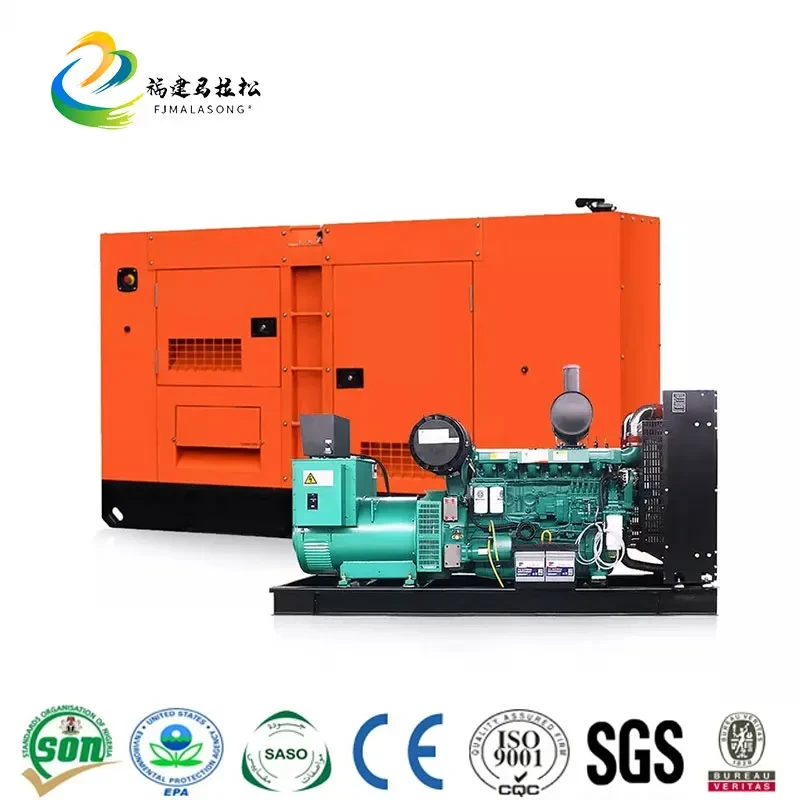Unveiling Silent Solutions: A Comprehensive Guide to Noise Reduction in Coal Generators
Introduction
Coal generators have long been integral to global energy production, serving as a cornerstone of power generation infrastructure. However, their operation comes with a significant downside: noise pollution. As industrial machinery, including coal generators, contributes to environmental noise levels, it's imperative to understand the sources of this noise and explore effective mitigation strategies. In this article, we delve into the world of coal generators, examining their operation, the impact of noise pollution, current noise reduction technologies, and innovative solutions aimed at achieving silent operation.
The Issue of Noise Pollution
Noise pollution is a pervasive problem in modern society, with industrial machinery being a major contributor. Coal generators, in particular, are notorious for their noise emissions, which can have adverse effects on both the environment and human health. The incessant hum of turbines and the clatter of mechanical components disrupts natural habitats, disturbs wildlife, and poses risks to nearby communities. Moreover, prolonged exposure to high noise levels can lead to hearing loss, sleep disturbances, and other health issues. Recognizing the severity of these impacts, there is a pressing need to address noise pollution from coal generators.
Understanding Noise Generation in Coal Generators
To tackle noise pollution effectively, it's crucial to identify the sources of noise in coal generators. Turbine operation, cooling systems, and various mechanical components all contribute to the cacophony emitted by these power plants. Additionally, noise is generated at different stages of the coal combustion and power generation process, from the initial pulverization of coal to the final conversion of steam into electricity. By pinpointing these sources, engineers and researchers can develop targeted solutions to minimize noise emissions.

Existing Noise Reduction Technologies
Fortunately, there are already several established methods and technologies for reducing noise in coal generators. These include insulation, soundproofing materials, and engineering design changes aimed at dampening vibrations and mitigating sound transmission. Insulation, for instance, can be applied to turbine housings and piping to absorb sound waves and prevent their propagation. Likewise, soundproofing materials such as acoustic panels and barriers can be strategically installed to minimize noise exposure in surrounding areas. Furthermore, engineering design changes, such as optimizing fan blade profiles or incorporating noise-reducing coatings, can help attenuate noise at its source.
Innovative Silent Mechanisms for Coal Generators
While traditional noise reduction technologies have proven effective to some extent, there's an ongoing quest for more innovative and advanced solutions tailored specifically for coal generators. Researchers are exploring cutting-edge technologies such as advanced acoustic materials, vibration damping systems, and improved turbine designs to achieve quieter operation without compromising efficiency. These silent mechanisms leverage the latest developments in materials science, acoustics, and engineering to address noise pollution at its root. By harnessing these innovations, coal generators can transition towards silent operation, minimizing their environmental footprint and improving the well-being of surrounding communities.
Conclusion
In conclusion, noise pollution from coal generators poses significant challenges, but solutions are within reach. By understanding the sources of noise, implementing existing noise reduction technologies, and embracing innovative silent mechanisms, we can mitigate the adverse effects of coal generator noise on the environment and human health. As we continue to advance towards a more sustainable energy future, prioritizing silent solutions for coal generators is essential. Only by working together can we ensure a quieter, cleaner, and healthier world for generations to come.



